Challenging Value Creation to Recover from Japan’s “Lost 30 Years”
Categories:
Overview
Scientifically elucidating innovation ecosystems and challenging to create new value through diversity and new combinations
For Japan to recover from the "lost 30 years" and be able to once again make an impact on, and contribute to the world, it is essential to generate new value through innovation. However, in today's extremely sophisticated and complex society, it is becoming increasingly difficult for individuals or single organizations to spur innovation solely on their own. What is required is building an innovation ecosystems in which a diverse organizations and talents mutually collaborate and co-create new value by leveraging their respective strengths.
Therefore, in this research, we are working on the analysis and mechanism design of the success factors of innovation ecosystems and conducting practical research for their social implementation—not only from the perspective of individual human talents and organizations, but also from the perspective of new value creation driven by the networking of diverse stakeholders.
Our specific research themes are as follows: (i) research on innovation ecosystems and mechanisms, including “the study of the success and failure factors of startup ecosystems by country, region, and industry” and “the elucidation of the relationship between the interdisciplinarity and collaboration of researchers in various fields and their success factors”; and (ii) research on value creation and innovation, including “the development of evaluation metrics for Japanese startups”, “the identification of mechanisms of smooth provision of medical data for medical research”, and “the design of mechanisms that enable effective, efficient, and sustainable public-interest activities involving government, citizens, and companies”.
In particular, making use of where APU is located, we are currently working on the formation of an industry-academia-government collaboration ecosystem centered on the semiconductor, space and satellite, and agriculture industries, all of which are strengths of the Kyushu region, and on the innovation driven by the social inclusion of people with disabilities in cooperation with “Japan Sun Industries (Taiyo-no-Ie)” (Beppu City) and its special subsidiary companies.
The knowledge gained through research and practice will also be applied to education in APU's international environment, with a focus on fostering the next generation of innovators. APU's multilingual and multicultural environment is truly conducive to innovation, and I aim to leverage this strength to conduct research, provide education, and apply research findings to social implementation in an integrated manner.
The Structure of Start-up Ecosystems and International/Industry Comparative Research
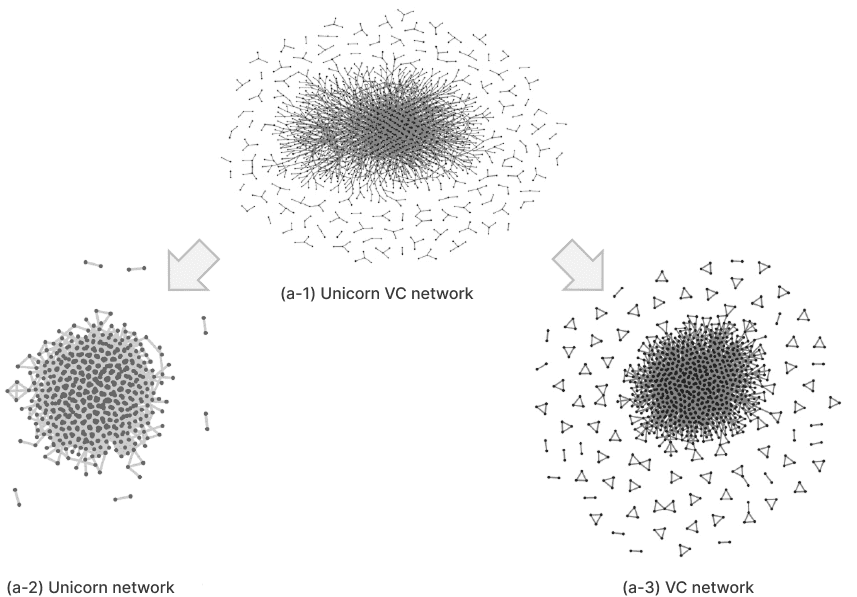
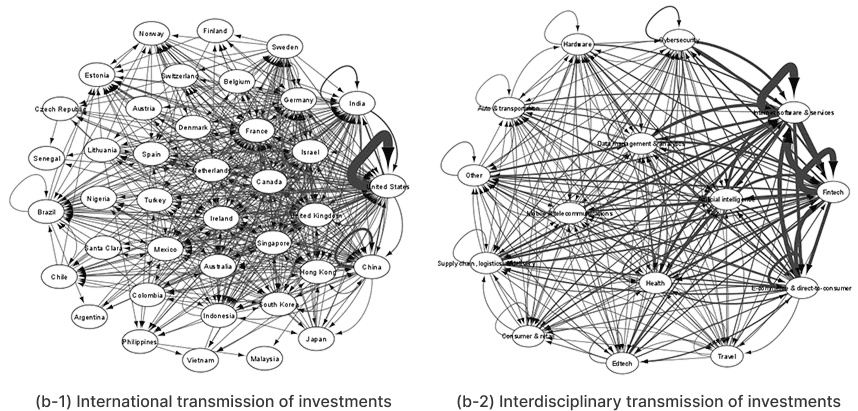
- (a) This research visualized the corporate value of unicorn companies and the performance of venture capital firms (VCs). Network analysis of relationships between them reveals that successful unicorn companies are concentrated in huge clusters.
- (b) This research demonstrated that startup knowledge is transferred internationally and across industries through VCs’ investments in unicorn companies.
Novelty/Originality
A scientific analysis of diversity and its combinations to elucidate the success factors of innovation ecosystems
The originality of this research lies in the activity treating the innovation ecosystem as "a place for value creation driven by the networking of diverse stakeholders" and analyzing the success factors of innovation ecosystem from multiple perspectives using an array of research methods.
As for our research methods, in addition to conducting a qualitative analysis based on case studies, we are using social network analysis to visualize the relationships among stakeholders, conducting a quantitative assessment based on a statistical analysis, and utilizing economic approaches such as game theory and mechanism design. In this way, I am unraveling the complex structures and dynamics of innovative ecosystems from multiple perspectives.
For example, our research into startup ecosystems by country and region not only presents success cases, but also visualizes inter-industry and international knowledge transfer by using a network analysis of investment relationships between unicorn companies and VCs to identify the structure, characteristics, and success factors of startup ecosystems. The study on star researchers clarifies the relationship between the diversity of research activities and research achievements by analyzing the interdisciplinarity and organizational mobility of researchers, while the study on promising young researchers empirically demonstrates the importance of collaboration in knowledge creation by analyzing the relationship between researchers and collaborative research. In addition, in our research on innovation driven by the social inclusion of people with disabilities, we are not only compiling case studies on innovations created by people with disabilities, but also working on research aimed at designing mechanisms to promote innovative creation.
In this way, the key features of this research are the comprehensive approach that combines macro and micro perspectives as well as qualitative and quantitative analyses, not to mention the fact that it goes beyond analysis to consider the design of systems and mechanisms necessary for social implementation.
Research on the Creation of Innovation through the Social Inclusion of Persons with Disabilities


(a-1) Examples of Individual Abilities (Illustrative Diagram)


(a-2) Examples of Support Models for Persons with Disabilities

(b) Innovation Brought About by the Social Inclusion of People with Disabilities
- (a) This research proposes four models for supporting people with disabilities and enabling them to realize their potential by reinterpreting their abilities as sources of innovation (individual support model, individual support and potential capability realization model, mutual support model, and mutual support and potential capability realization model).
- (b) Instead of focusing on people with disabilities as the target of support, I conduct various case studies on innovation driven by the social inclusion of people with disabilities and study the mechanisms that promote innovation.
Related Research
Analyzing Characteristics of Diversity of Star Scientists by Research Field: Using the Indicators of Field Diversity and Institution Diversity
Principal Investigator
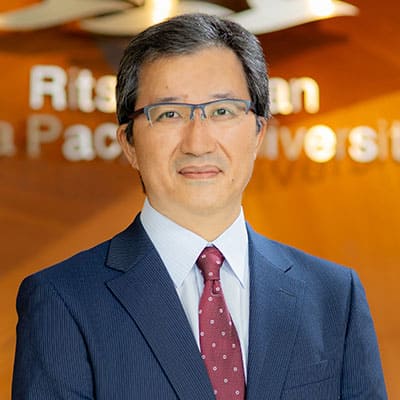
Ritsumeikan Asia Pacific University
You can view and print a summary of this page's contents in a single PDF page here.






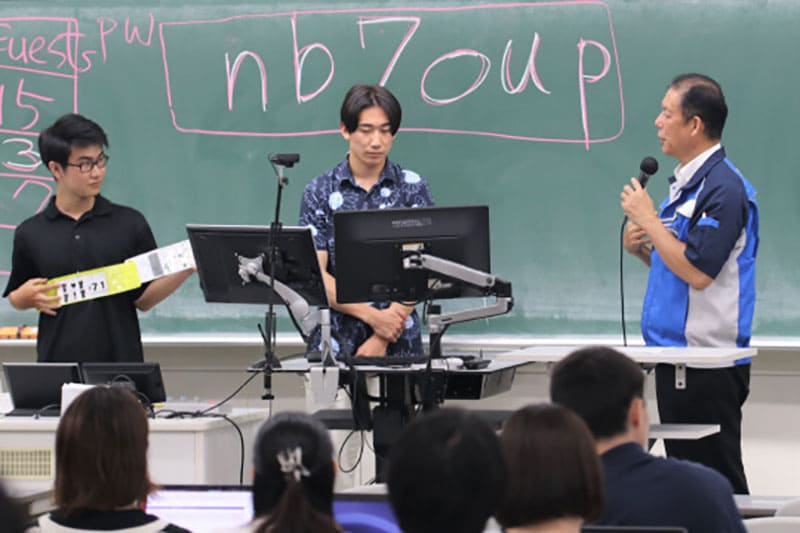 (a)
(a)
 (b)
(b)
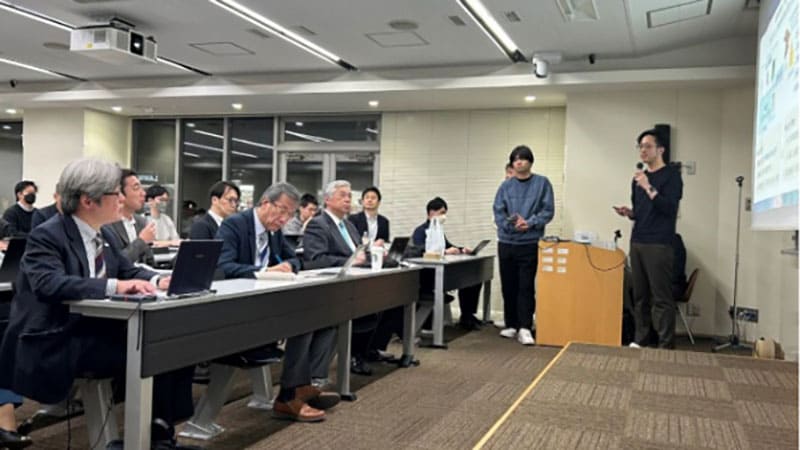 (c)
(c)
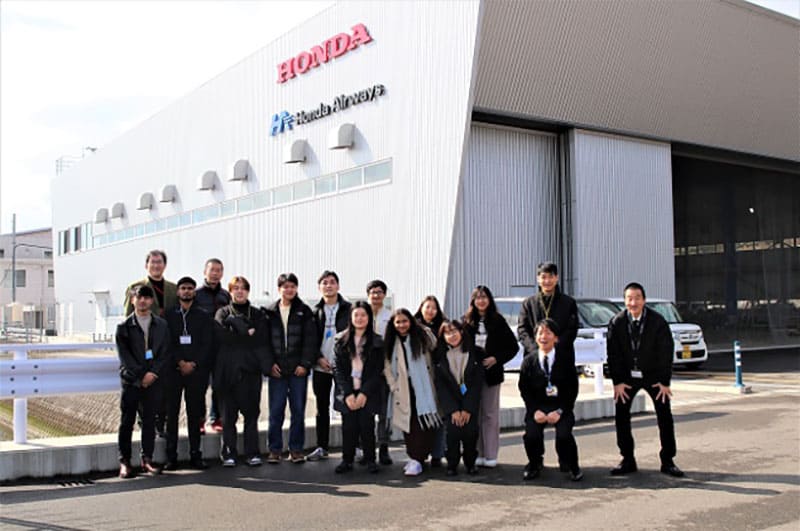 (d)
(d)
I had been working for a general trading company and devoting myself to various projects for many years, but what still remains is the gnawing sense of frustration that our generation could not do anything to change Japan’s "lost 30 years.”
Now that I have moved to academia, I will continue working hard to do as much as my time permits. My goal is to create innovation through industry-academia-government collaboration that leverages and integrates both my business experience and academic knowledge. I would like to continue my research and the social implementation thereof to make the world a better place, to bring greater happiness to people, and to leave something for the children of the future generation to be proud of. In today's society, where the future is uncertain, I would like to recover from Japan's "lost 30 years” and contribute to the world by creating value through what the economist Schumpeter called "new combinations." This is what keeps me going.
Ritsumeikan Asia Pacific University Faculty Information
researchmap